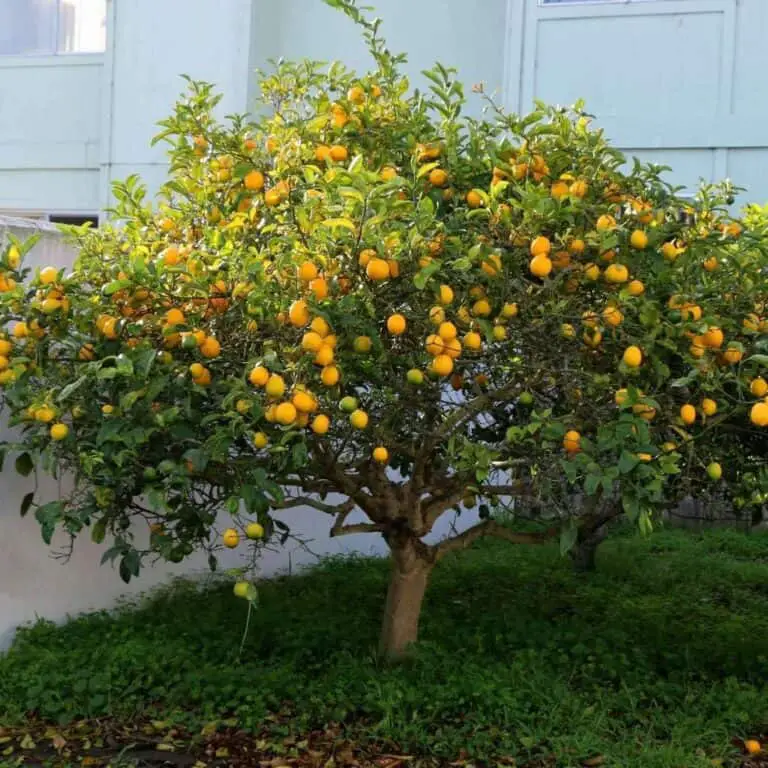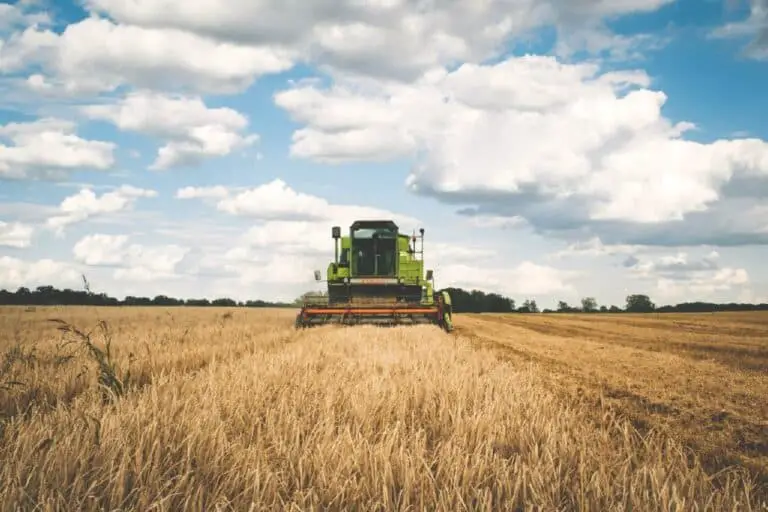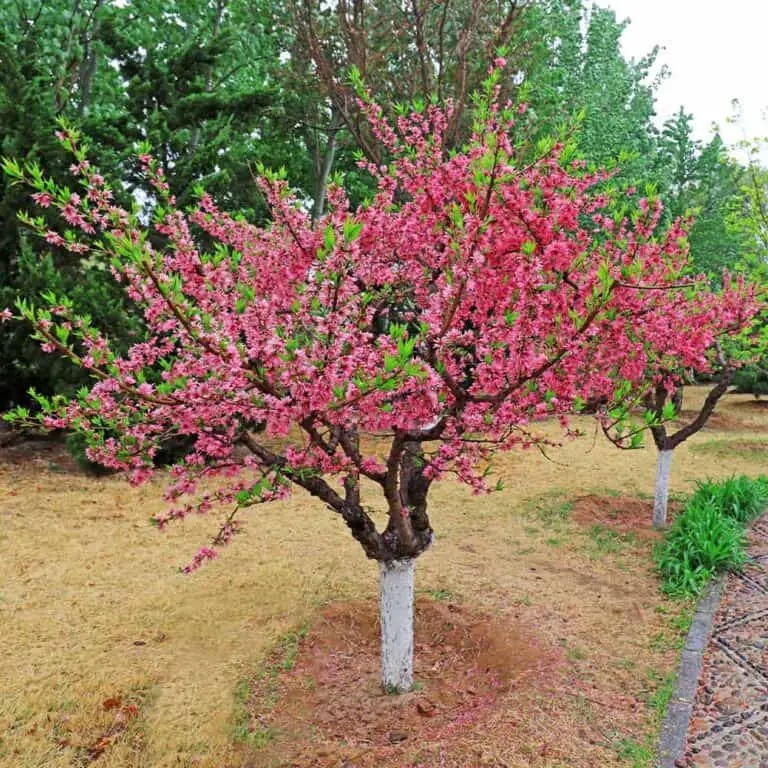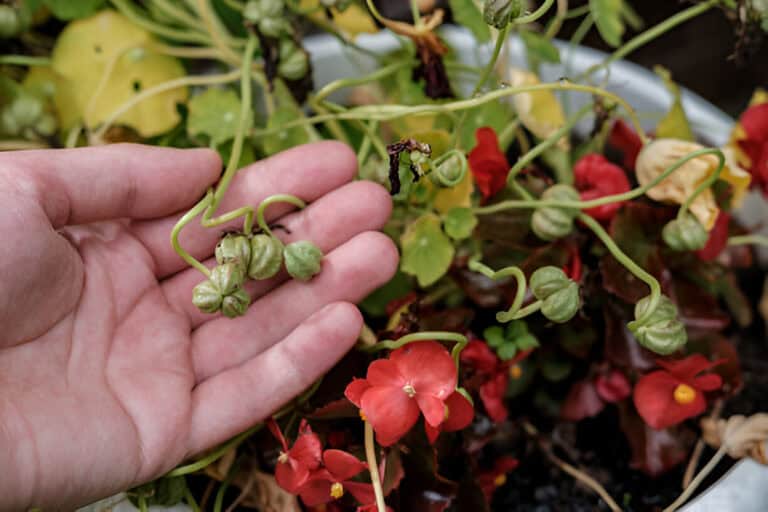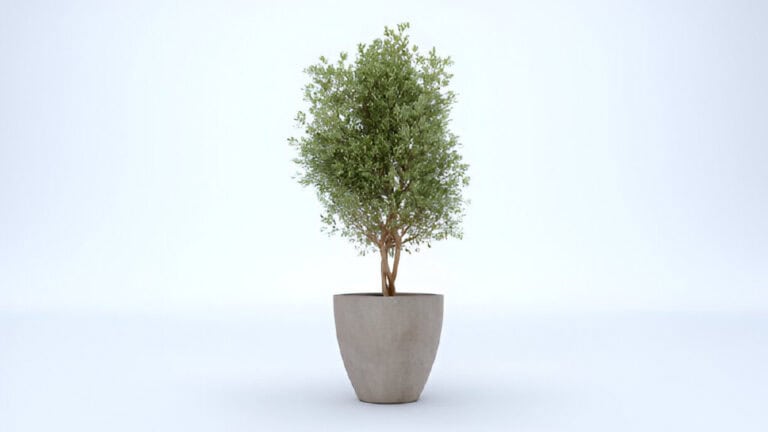What is a Hydroponic Tower? + How to Make Your Own
One method of hydroponic growing involves the use of growing towers. These hydroponic growing towers are columns with many openings in which to plant sprouts and grow crops. Nutrients are usually dripped in from above and distributed throughout the tower.
A tower system allows for efficient use of space both indoors and outside. They also work well outdoors. This eliminates the need for a lighting system and its costs. In fact, a good tower system only needs enough power to run the pump for a few minutes, several times a day.
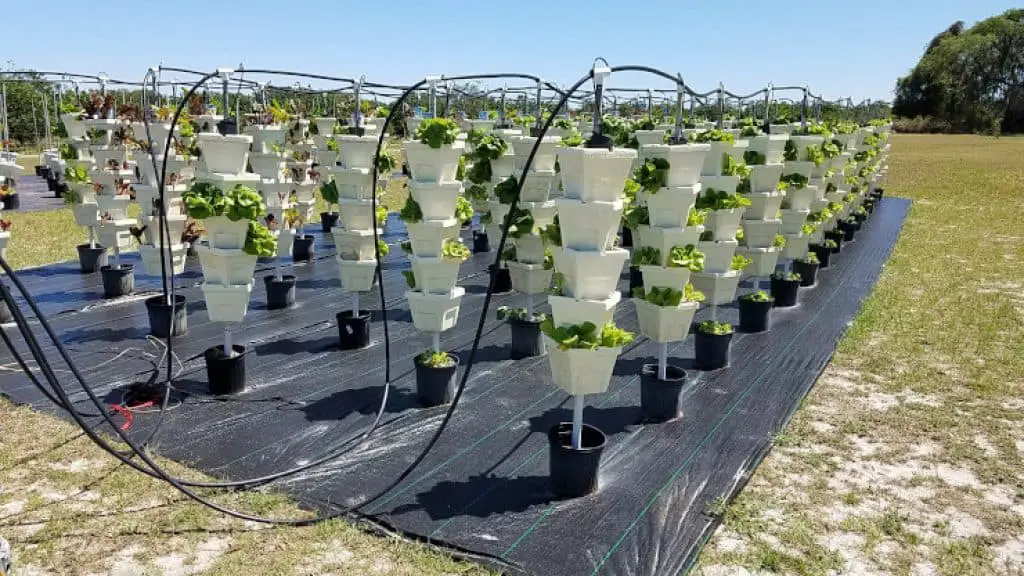
How Do You Build a Hydroponic Tower?
There are a variety of different tower systems on the market. In order to explain a Hydroponic tower System, we’ve used the Vertigro Tower system as our basis. Should you choose a different tower system, feel free to modify as needed and be sure to read any manufacturers’ instructions.
When using any system outside, it is best to set up a good barrier between the ground and your system. This will inhibit any weeds or bugs from attacking your crop. For this system, a hole is dug into the ground, and the pipe is placed vertically. If you are using this system inside, you will need some type of stabilization system, something as simple as a concrete block can be used.
A standard 2.5 qt. pot is then placed on the pole and set on the ground or block, this is your base. The Vertigro pots are then stacked in place, each one at a 45-degree twist from the one below it. This allows all 4 corners for planting. Pots can be placed between 4 and 6 times per post. Place a standard 4 in. pot with medium at the top.
This serves to distribute the water evenly and gently. At the top of the post is a PVC tee socket. This piece will hold the tubing required to move the water and nutrients through the system. From there, you need a basin to hold the water/nutrients and a pump to disperse them. That’s it!
Choosing a Growing Medium for Your Tower
As an active hydroponic system, you will need to use a medium. There are a variety of materials that can be used within the pots. You should evaluate the various mediums and choose ones that are well suited to the environment of your towers.
- Perlite – Even if you’ve never heard of the world perlite before, you’ve seen it. It’s the little white ‘rocks’ that you’ll find in most potted plants. In the world of hydroponics, perlite serves essentially the same function. It holds oxygen well, aerates roots, and provides excellent drainage. It is prone to shifting when water flows through, so you’ll want to mix it with another medium.
- Coco Fiber – The husk of the coconut, an otherwise discarded byproduct, makes an excellent medium, and is a much ‘greener’ option. It is hormone rich and fungus free, but it is prone to holding water, which may negatively affect root growth.
- Grow Rock – also known as Expanded Clay Aggregate – Balls of porous material that are pH neutral and release hardly any nutrients into your plants. It lets you monitor the nutrients your plants get from your fertilizer. Whether or not they are environmentally friendly is up for debate, as they are stripmined, but they are also endlessly reusable.
- Vermiculite -Vermiculite is a more expensive cousin of perlite. It is similar enough to be mistaken for perlite. But, it has some important advantages. It has far better wicking properties than any of the other mentioned mediums. It also retains far more water than perlite. As mentioned above, it is far more expensive than perlite and can be difficult to find. It is an excellent additive to a custom mix of medium.
It’s all about the right medium or mix for your plants and environment. For growing outdoors, in a warm, humid, sunny area (say, Florida), a combination of perlite and Coco Fiber works well. It allows the water to filter through the pots slowly enough to provide nutrients while also protecting the plants from the intense sun.
In a stable, low-humidity indoor setting, a sand mix may grow plants better and cheaper. Experimentation may be key.
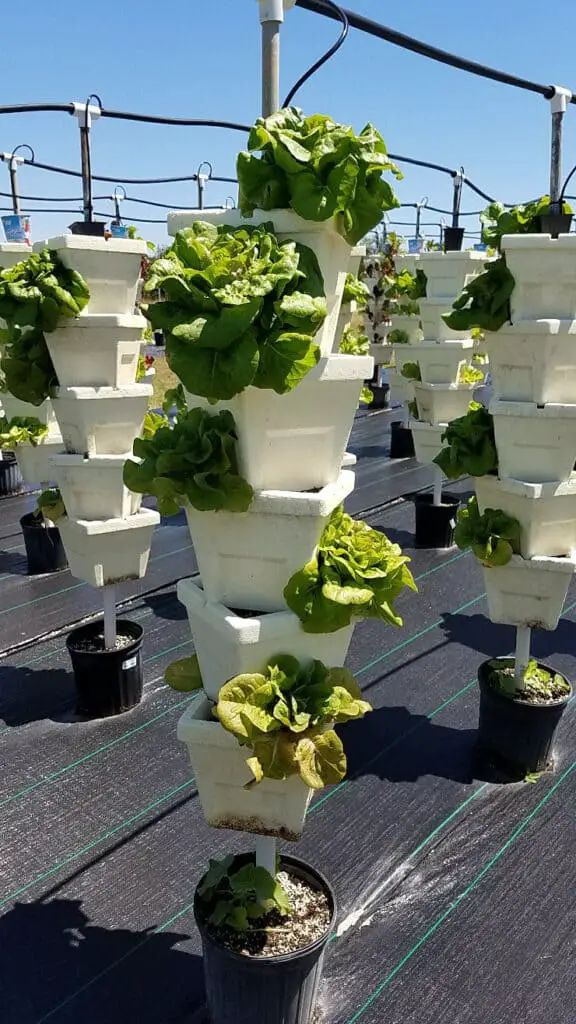
What Can You Grow in a Hydroponic Tower?
As with any type of growing, you must first consider your environment. If you are growing in a temperature-controlled environment, then your options abound. If you have a less regulated environment, then consider it before choosing a crop and variety. Growing your own hydroponic food can be one of the most rewarding hydroponic projects.
The wonderful thing about a tower system is that each opening is separate enough to allow multiple crops at once. You must choose crops that have similar PH and lighting preferences. Otherwise, you can go for variety without sacrificing quality.
Small, fragrant herbs that deter pests work well in the small top pot. They naturally repel insects outdoors. The largest pot, at the base, can easily accommodate 4 large vegetable seeds, lending well to pumpkins, large squash, and melons. Given proper conditions, lettuces grow beautifully in the interim pots, as the shaping of the pots helps the lettuce form well.
Small vegetables (either naturally small, or smaller versions) grow nicely in the medium pots too. You should avoid vegetables that grow underground. They can have difficulty growing, as the medium has very little space to expand. Also, removing the grown vegetables can prove difficult through the small openings.
| Related: Choosing the Best Hydroponic Reservoirs for Your System |
Planting in a Hydroponic Tower System
A few crops will sprout directly in the medium, especially if you use a softer medium like Coco Fiber, but a separate start is recommended. We’ve reviewed the benefits of Rockwool before, these provide a soil-free environment for your seeds to start. Soil itself is another good starter, and using a seed starter tray can make things easier.
If you’re on a shoestring budget or are not keen to waste, you can use a simple takeout container. Be sure to sanitize it in a hydrogen peroxide solution, before you place some basic soil in it and plant your seeds. While they may not grow as fast as seeds placed in fortified soil or rockwool, it is a very cost-efficient option.
Transplant seedlings into the hydroponic tower system when you see the second set of leaves. This allows time to strengthen, but generally not enough time to create complex root structures that may become entangled. Waiting until the second leaf also mitigates your chance of shock to the plant. Before you plant your seeds, you should run your water/fertilizing solution well through the system. Having water and nutrients available will decrease the shock of transplant.
Hydroponic Tower System Maintenance
There are 2 major factors to consider as your plants begin to grow. The first involves the pH of your water/fertilizer mix. Each plant in your system should require a similar pH level. Be aware that your plants towards the bottom of the tower may receive a mix that is slightly more basic. Maintaining this pH level will keep your plants growing strong and quickly.
The second thing to keep an eye on is the amount of water pushed through your system and how often. Especially if you’re in an outdoor environment, check this regularly. You want to be sure your first pots are not drowning. While also making sure the bottom pot at the end of the line is getting sufficient nutrients.
It can be a delicate balance. In an extremely dry or hot environment, you may need to ‘feed’ your plants several times a day. In a more temperate climate, you may be able to get away with feeding them only once or twice a day.
Like anything you’re growing, you should examine your leaves for over- or underwatering. Keep an eye out for pests. Always be on the lookout for any diseases that may be lurking. Hydroponics removes many variables from growing. But, nothing is more valuable than checking your crops regularly.
Harvesting From Your Towers
The beauty in a hydroponic tower system comes at harvest. Most plants can be cut with a sharp blade and quickly rinsed. Because they are not sitting in the dirt, you’ll not find much in the way of debris. Though you should always keep an eye out for the occasional pest, especially if you’re growing outdoors.
If you are growing the same product repeatedly, a good clearing of the roots is all you need. Once you clear the roots, you can top off with medium and plant new seeds.
Every few harvests, or when you switch crops, you should do a thorough cleaning of your system and possibly replace your medium. The USDA has recommendations regarding the cleaning of materials used for commercial growing. Be sure to do your research on this matter.
Convinced Yet?
Overall, tower growing can be an amazing, simple, and space-saving way to produce crops, whether for personal or commercial use. In a University of Mississippi study, crops grown in tower systems showed a 30% larger yield and greater flavonoid and antioxidant properties.
NASA found that these systems can reduce water usage by 98% and fertilizer use by 60%. Its low cost and easy upkeep make it a winner for all, from small gardeners to large growers.

